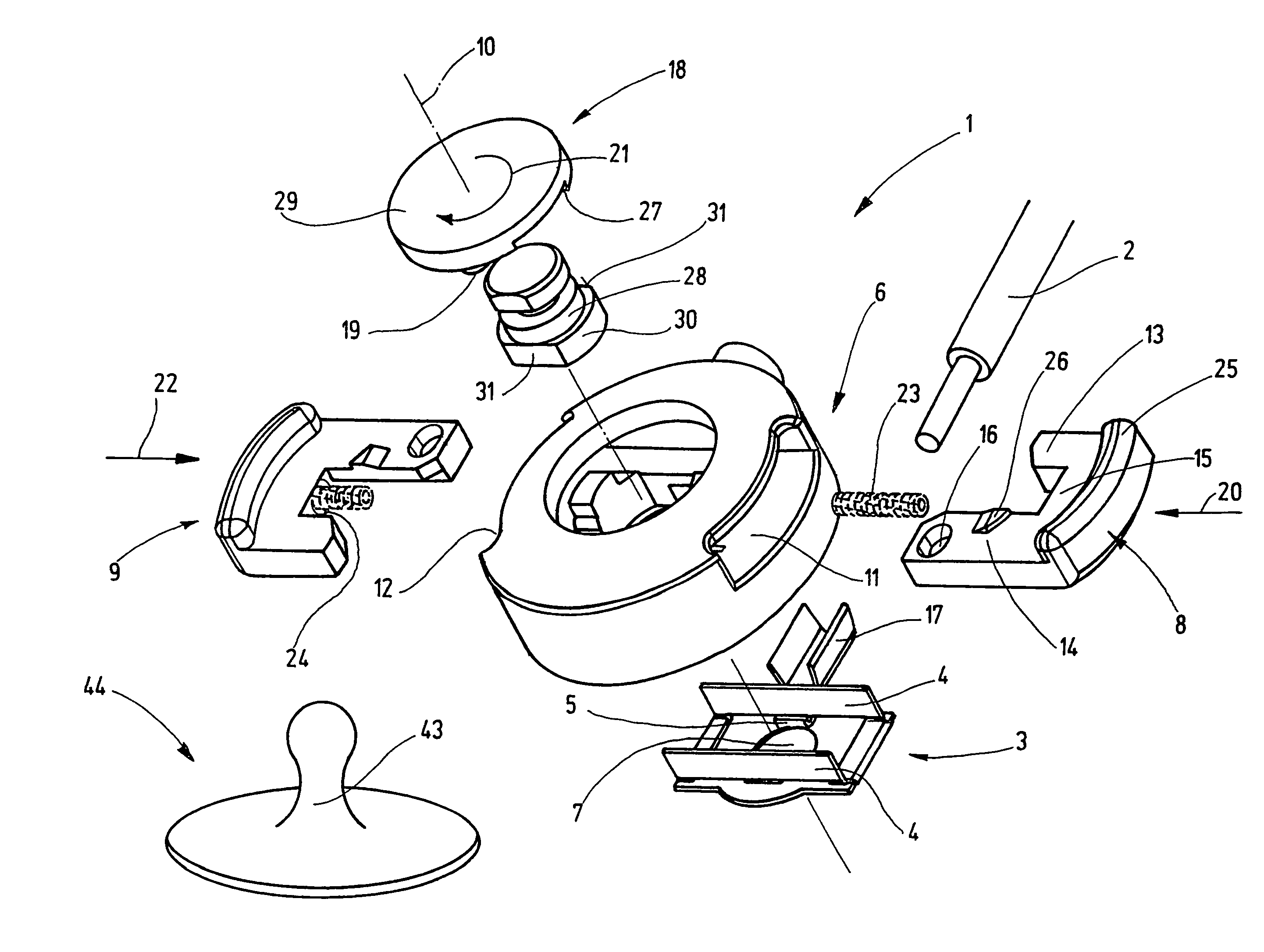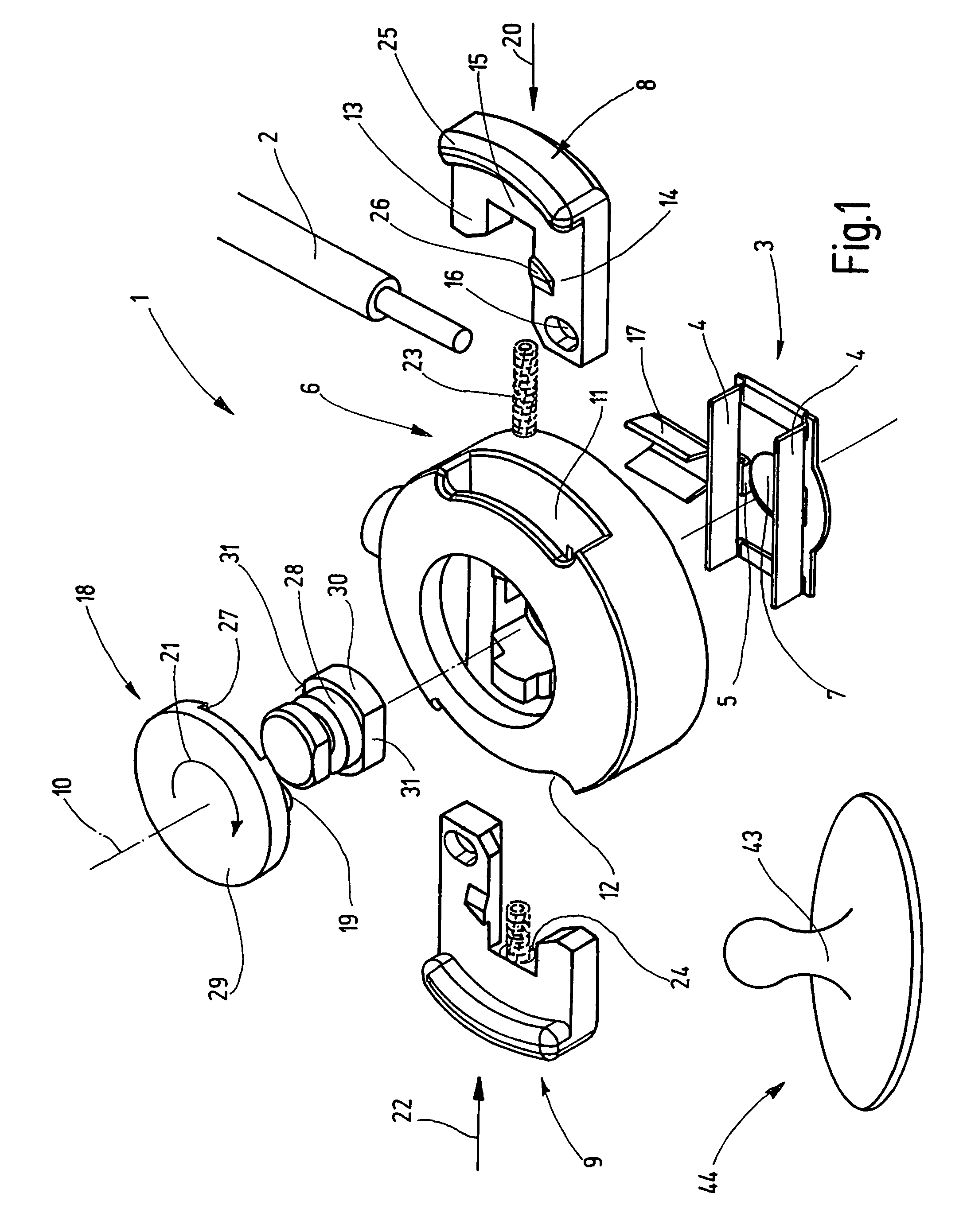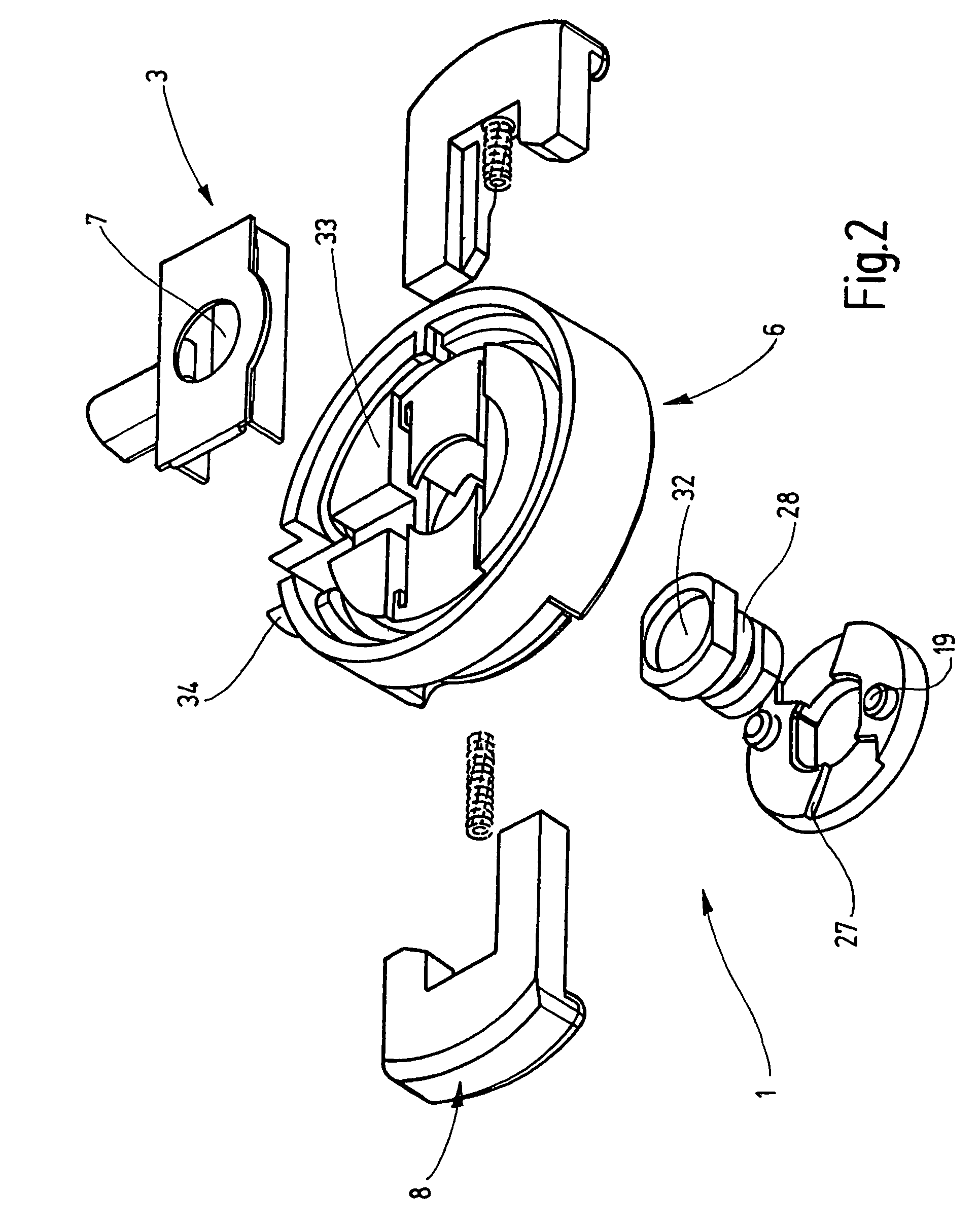Electrical device connecting a line to an electrode
a technology of electrical connection and electrode, which is applied in the direction of electrically conductive connection, coupling device connection, electrical apparatus, etc., can solve the problems of high user demands, low dimensional accuracy and high tolerance of the connecting head of the electrode, and achieves low application of force and high retention strength
- Summary
- Abstract
- Description
- Claims
- Application Information
AI Technical Summary
Benefits of technology
Problems solved by technology
Method used
Image
Examples
Embodiment Construction
[0024]FIG. 1 illustrates the individual elements of a device 1, in an exploded view. The device 1 for electric connection of a connecting line 2 to an electrode 44, has a contact member 3 for plug connection to a contact pin 43 of the electrode 44. The structure of the contact member 3 is substantially similar that disclosed in DE 37 19 474 A1 or U.S. patent application Ser. No. 10 / 444,949 (now U.S. Pat. No. 6,780,065), the subject matter of which is thereby incorporated by reference. In particular, the contact member has two energy storing elements 4 in the form of spring legs extending parallel to each other when not extended. The spring legs form a one-piece contact bead 5 in their central area. With the bead end spaced a certain distance from the energy storing element 4, the contact beads 5 form a contact zone which, in a side view, is curved or wedge-shaped, and in a top view is straight, wedge-shaped, or curved. The contact zone extends into an opening for the contact pin 43 ...
PUM
 Login to View More
Login to View More Abstract
Description
Claims
Application Information
 Login to View More
Login to View More - R&D
- Intellectual Property
- Life Sciences
- Materials
- Tech Scout
- Unparalleled Data Quality
- Higher Quality Content
- 60% Fewer Hallucinations
Browse by: Latest US Patents, China's latest patents, Technical Efficacy Thesaurus, Application Domain, Technology Topic, Popular Technical Reports.
© 2025 PatSnap. All rights reserved.Legal|Privacy policy|Modern Slavery Act Transparency Statement|Sitemap|About US| Contact US: help@patsnap.com



